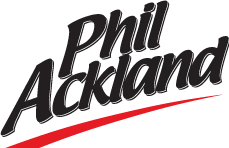Inspecting Commercial Kitchen Systems
How well do you understand commercial kitchen exhaust and fire suppression jargon? This book is written for design engineers, building inspectors, fire prevention officers, restaurant and property managers, maintenance workers and insurance companies. With over 100 photos and drawings it breaks down the regulations and makes them easier to understand.
Inspecting Commercial Kitchen Systems, by Phil Ackland
A must have reference for anyone involved in commercial kitchen exhaust and fire suppression systems.
Chapter Overview
Chapter One: General
This chapter discusses the basic principles of commercial kitchen ventilation. It reviews air movement, exhaust system configuration (Type I and II) and fire protection.
Chapter Two: Codes and Responsibilities
This chapter reviews the two major codes used in design, construction and installation of commercial kitchen exhaust systems. It outlines the areas of responsibility for architects, engineers, designers and installers.
Chapter Three: Appliances
A basic overview of the different cooking energy sources and appliances in commercial kitchens. It touches on each of the most common appliances found in commercial kitchens and how they contribute to grease buildup and fire hazards.
Chapter Four: Hoods
Type I and Type II systems are reviewed, as well as defining the various hood designs along with their components. The grease extraction method of canopy and water wash hoods is described. Color pictures aid in understanding these systems. Non-compliant hood systems are discussed.
Chapter Five: Fire Extinguishing Systems
This chapter covers the use of portable and fixed pipe fire-extinguishing systems. The code requirements, components and the activation of these systems are discussed.
Chapter Six: Ducts and Fans
Code requirements for Type I ducts, duct access and enclosures are outlined. Non-compliant ductwork is illustrated.
Type I fan types are identified along with non-compliant Type II. Terminations and proper grease containment is expanded on. The chapter discusses air pollution control units. Using numerous visual examples, this chapter shows non-compliant systems that are out there today and how much of a fire hazard they pose.
Chapter Seven: Service Providers
Are you getting a complete, professional service? This chapter outlines what to expect from the major servicing contractors: fire-extinguishing system technicians, appliance maintenance technicians and kitchen exhaust cleaners. It will aid owners and inspectors in defining the qualifications, performance competencies and follow-up procedures required by these trades.
Chapter Eight: Inspections
This chapter looks at inspections of completed exhaust and fire suppression systems. It goes over a pre-operation inspection checklist used prior to building occupancy. It also looks at inspections of fully operational commercial kitchens.
Chapter Nine: Appendices
Forms
This manual provides samples of a number of forms that are reproducible.
Kitchen Exhaust Inspection Sheet: This form provides concise, accurate information to all parties concerned. It is designed for professional inspectors such as fire officers, investigators and property management personnel whose job it is to ensure that all components of the exhaust system are up to the fire code and in good working order.
Exhaust Cleaning Performance Form: This form outlines the various standards and conditions which apply to cleaning exhaust systems.
After Service Follow-up Report: This form reviews the condition of the system and points out various possible problem areas that may need attention. It is a brief report card on the system after a cleaning service has taken place.
Note: Use of these forms can protect restaurant and property owners from possible liability relating to a fire or other serious problems within the exhaust system.
Questions? Contact Ackland and Sander Consulting at 706-516-4176.

